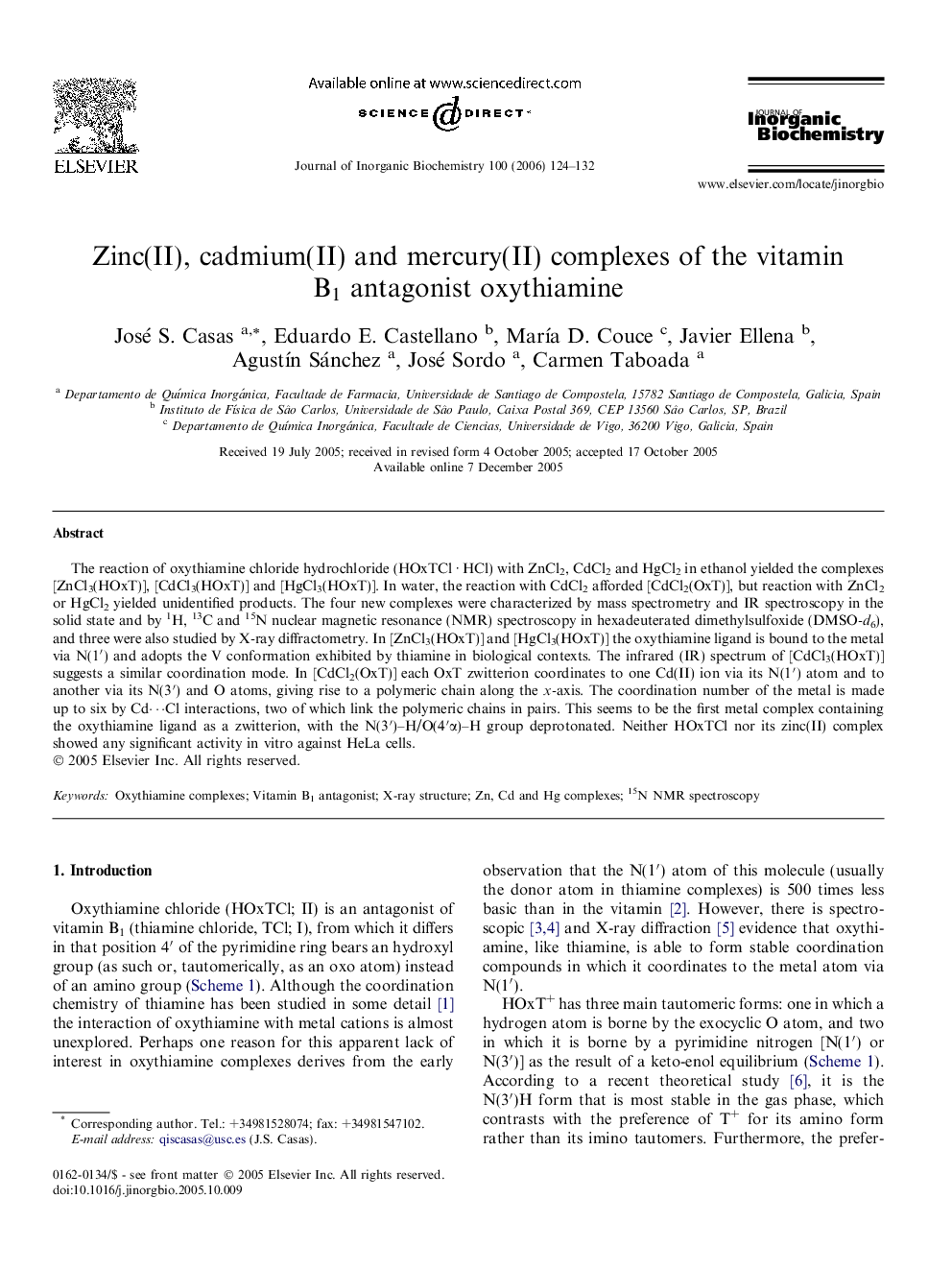| Article ID | Journal | Published Year | Pages | File Type |
|---|---|---|---|---|
| 1317406 | Journal of Inorganic Biochemistry | 2006 | 9 Pages |
The reaction of oxythiamine chloride hydrochloride (HOxTCl · HCl) with ZnCl2, CdCl2 and HgCl2 in ethanol yielded the complexes [ZnCl3(HOxT)], [CdCl3(HOxT)] and [HgCl3(HOxT)]. In water, the reaction with CdCl2 afforded [CdCl2(OxT)], but reaction with ZnCl2 or HgCl2 yielded unidentified products. The four new complexes were characterized by mass spectrometry and IR spectroscopy in the solid state and by 1H, 13C and 15N nuclear magnetic resonance (NMR) spectroscopy in hexadeuterated dimethylsulfoxide (DMSO-d6), and three were also studied by X-ray diffractometry. In [ZnCl3(HOxT)] and [HgCl3(HOxT)] the oxythiamine ligand is bound to the metal via N(1′) and adopts the V conformation exhibited by thiamine in biological contexts. The infrared (IR) spectrum of [CdCl3(HOxT)] suggests a similar coordination mode. In [CdCl2(OxT)] each OxT zwitterion coordinates to one Cd(II) ion via its N(1′) atom and to another via its N(3′) and O atoms, giving rise to a polymeric chain along the x-axis. The coordination number of the metal is made up to six by Cd⋯Cl interactions, two of which link the polymeric chains in pairs. This seems to be the first metal complex containing the oxythiamine ligand as a zwitterion, with the N(3′)–H/O(4′α)–H group deprotonated. Neither HOxTCl nor its zinc(II) complex showed any significant activity in vitro against HeLa cells.
